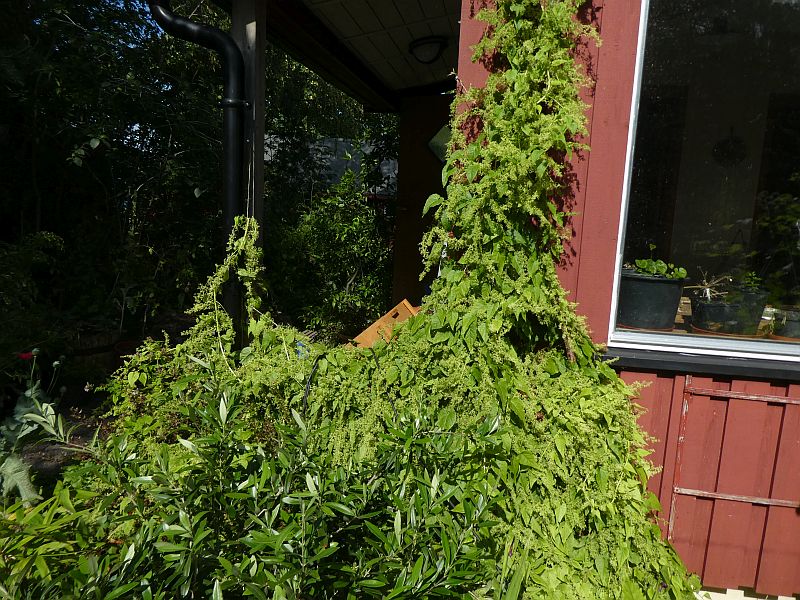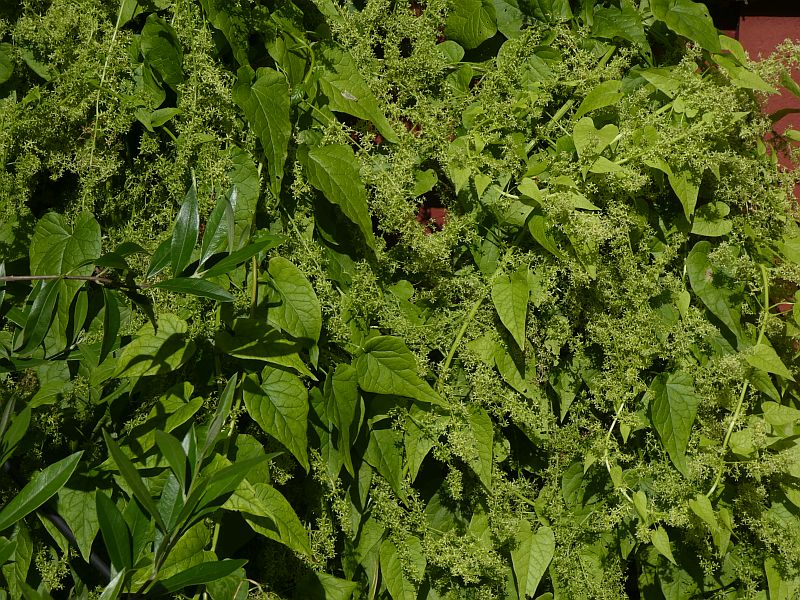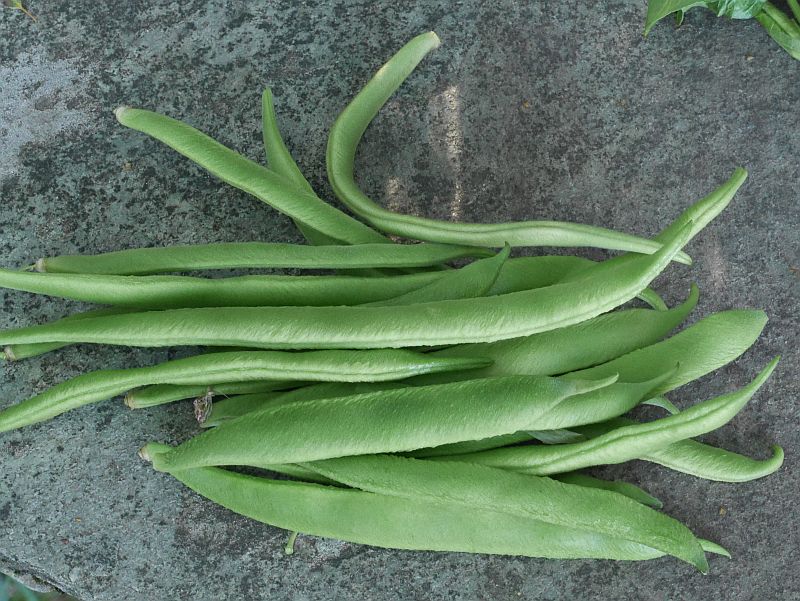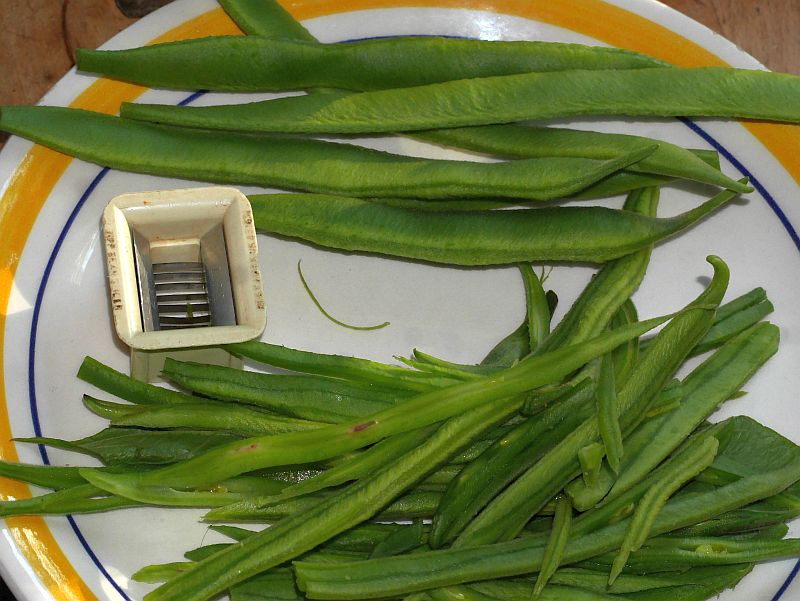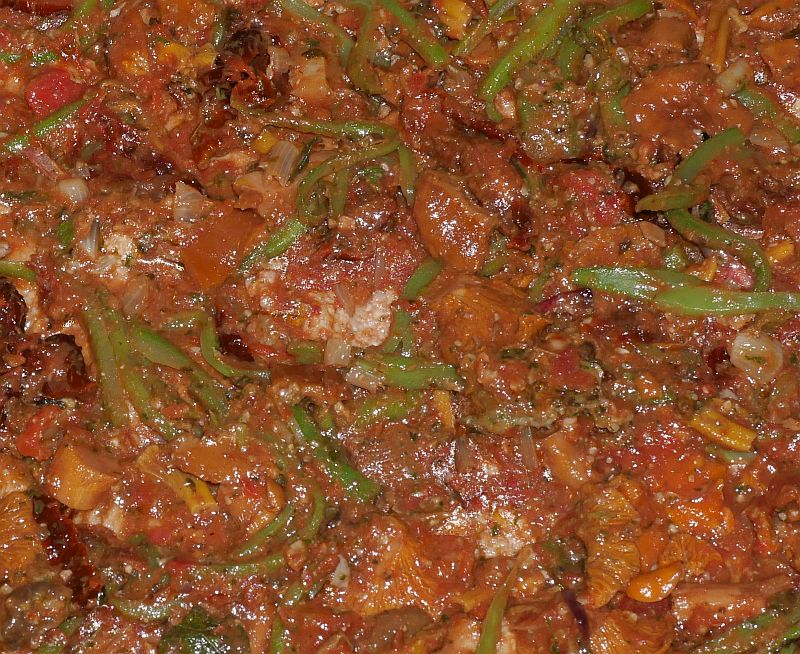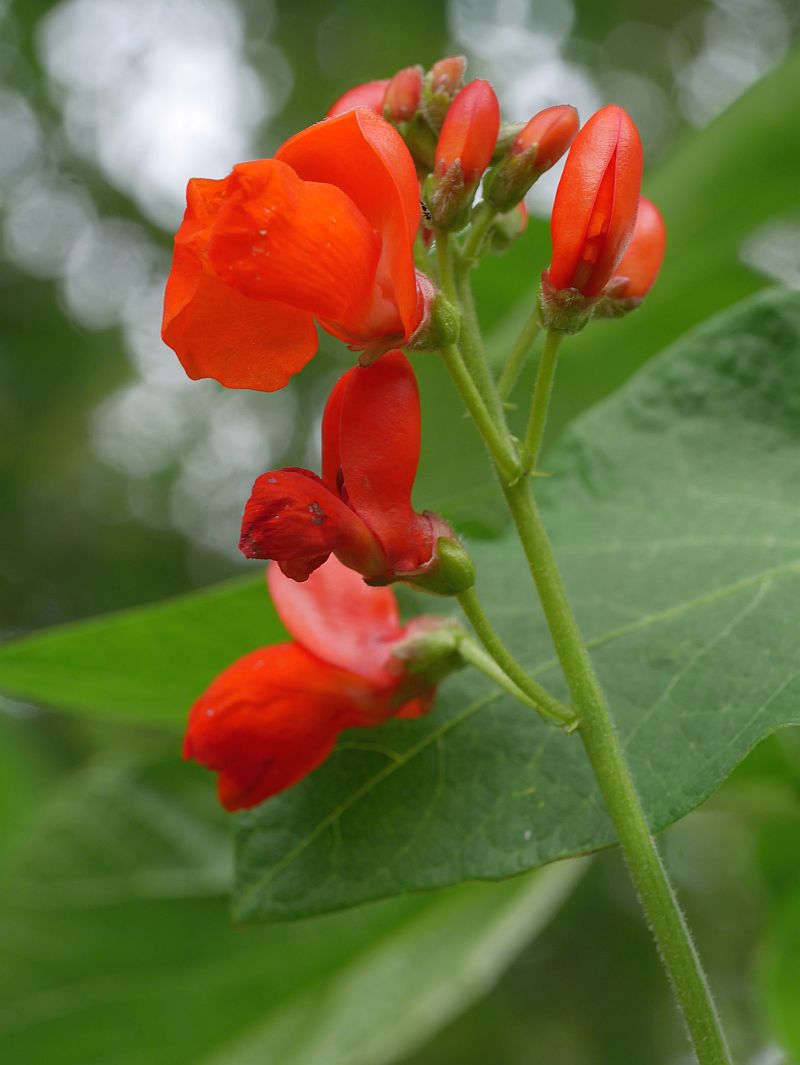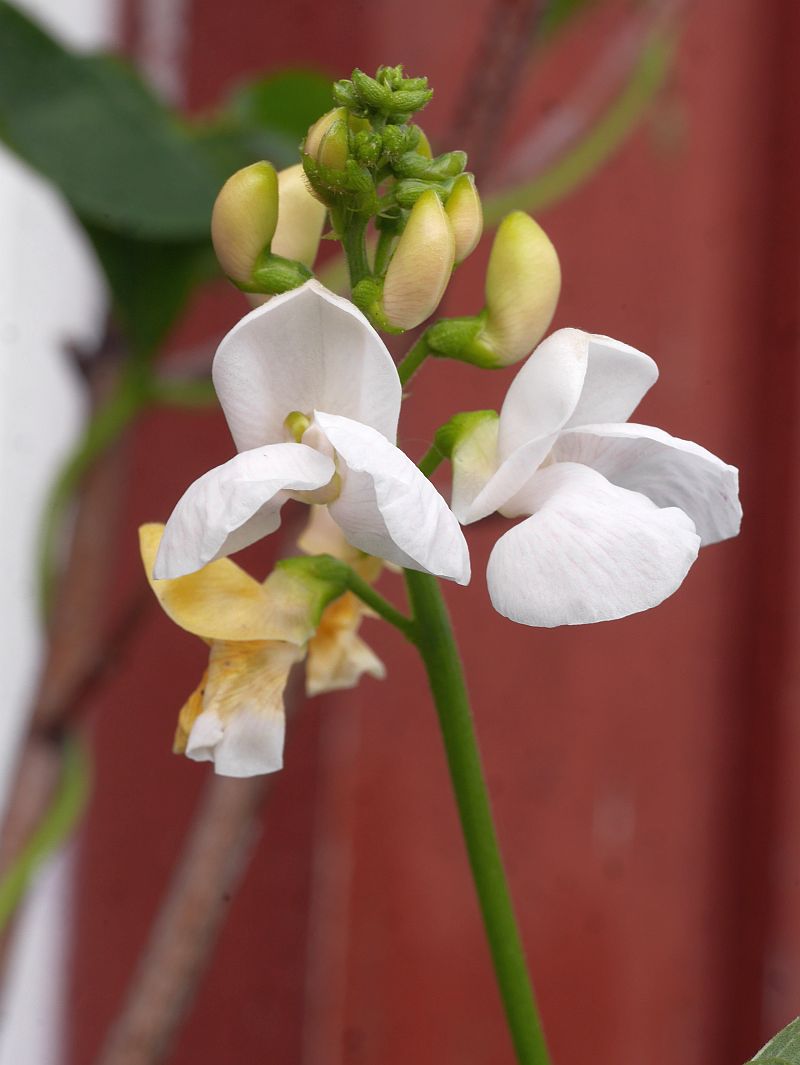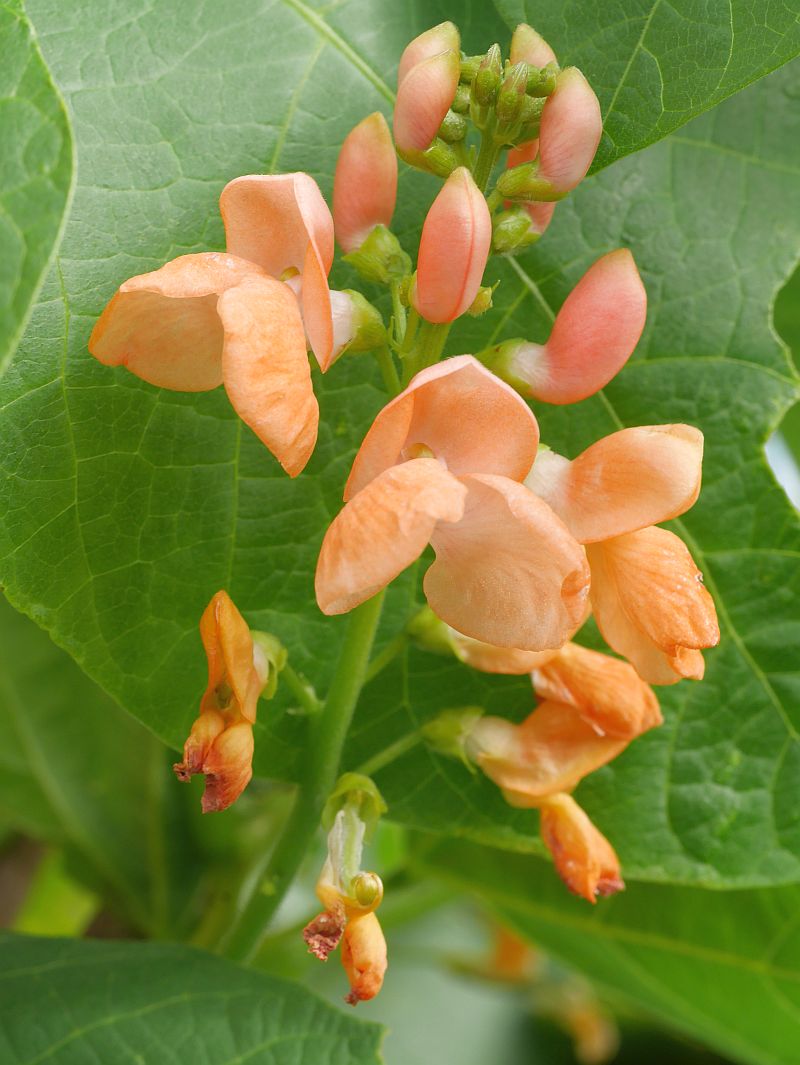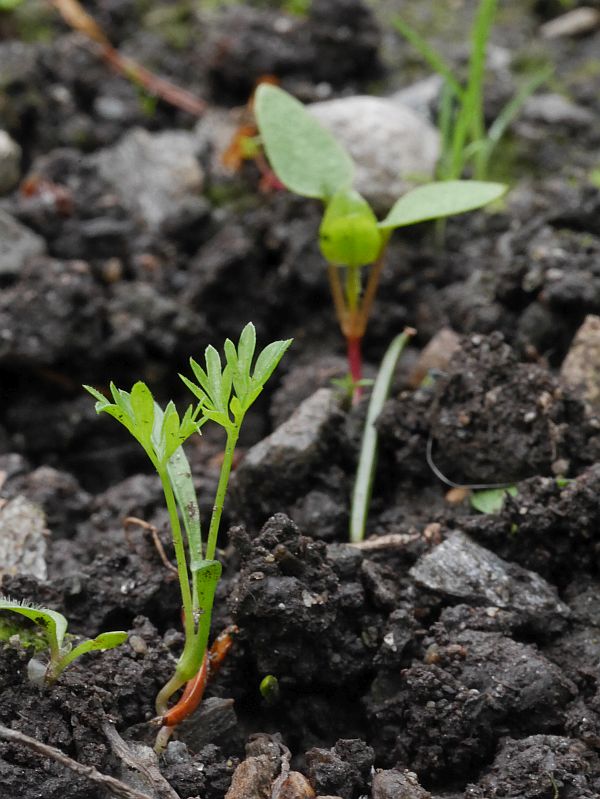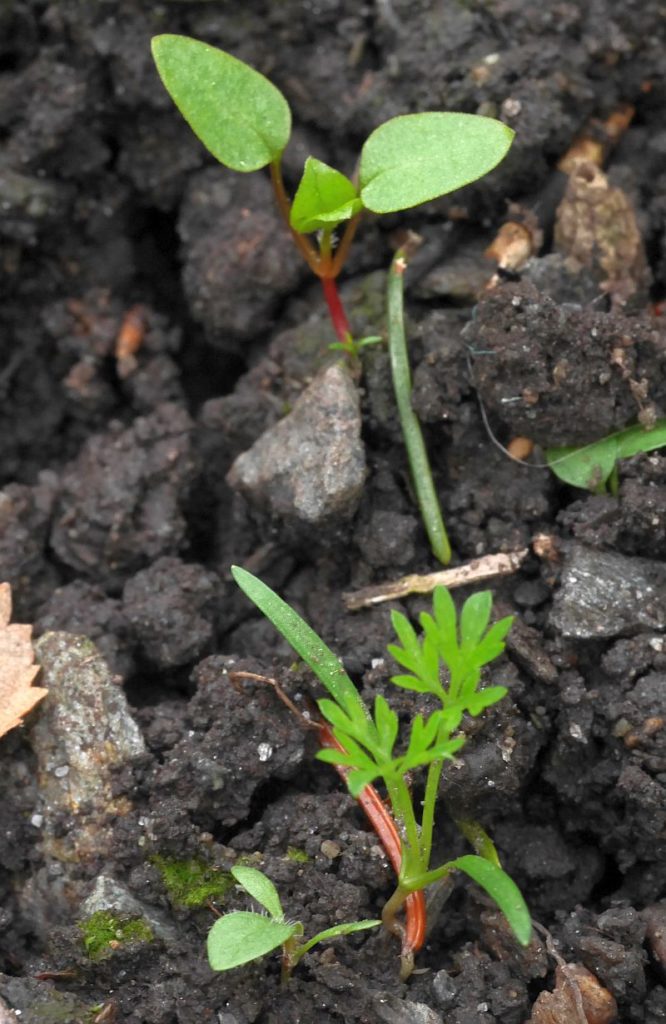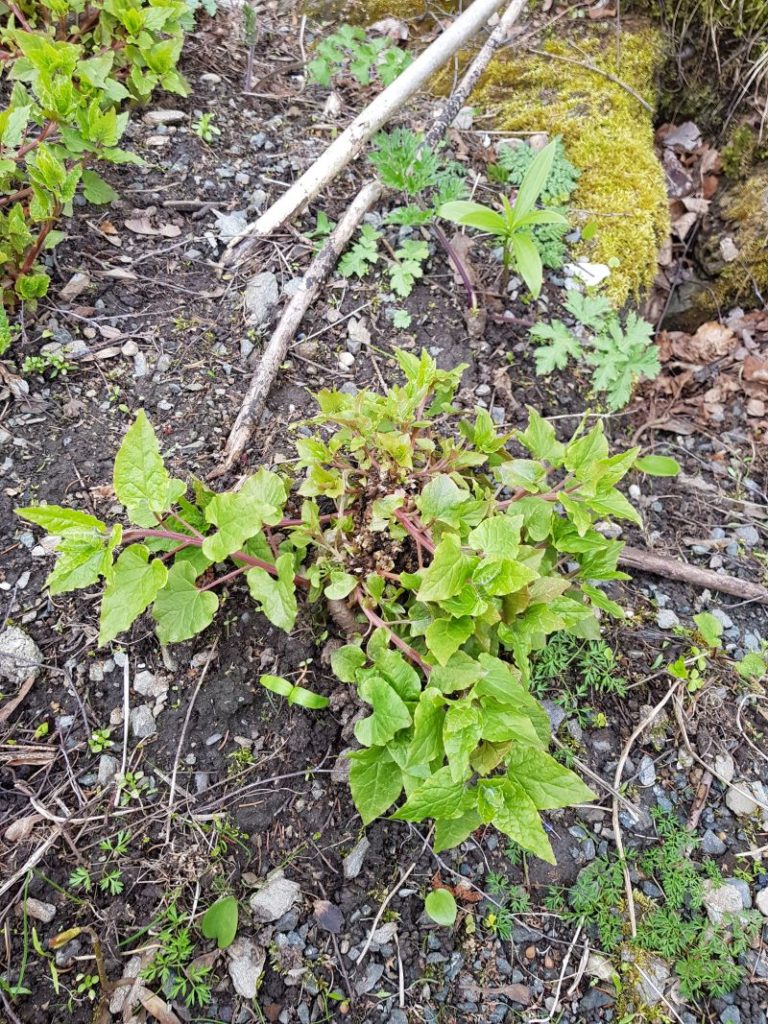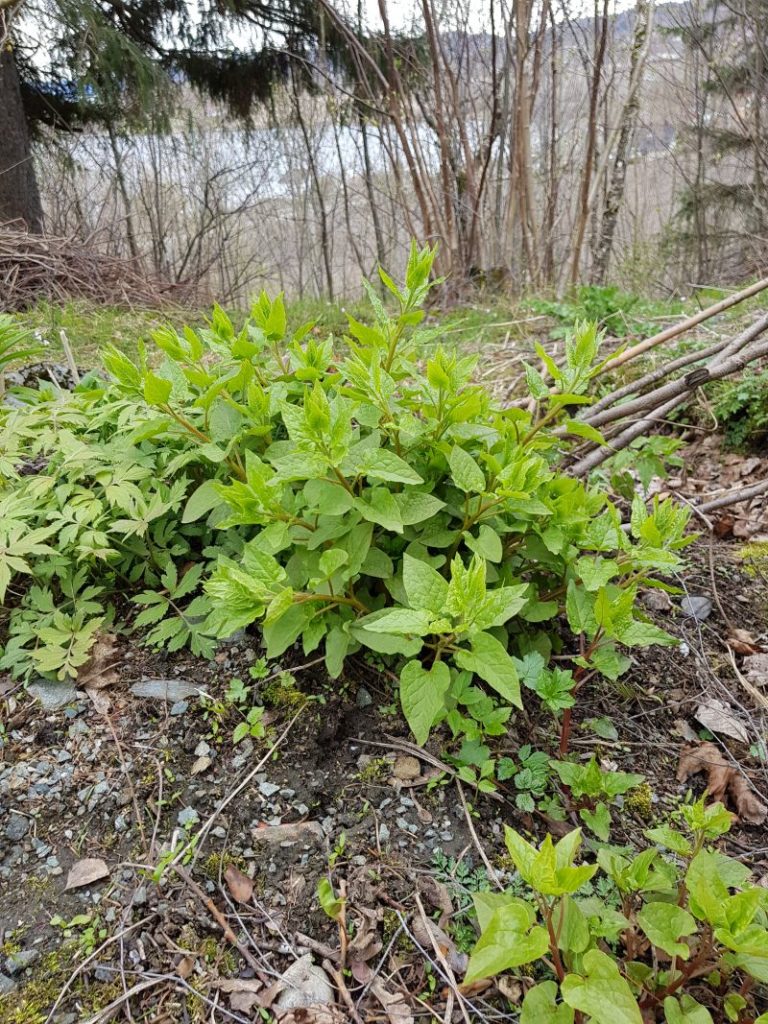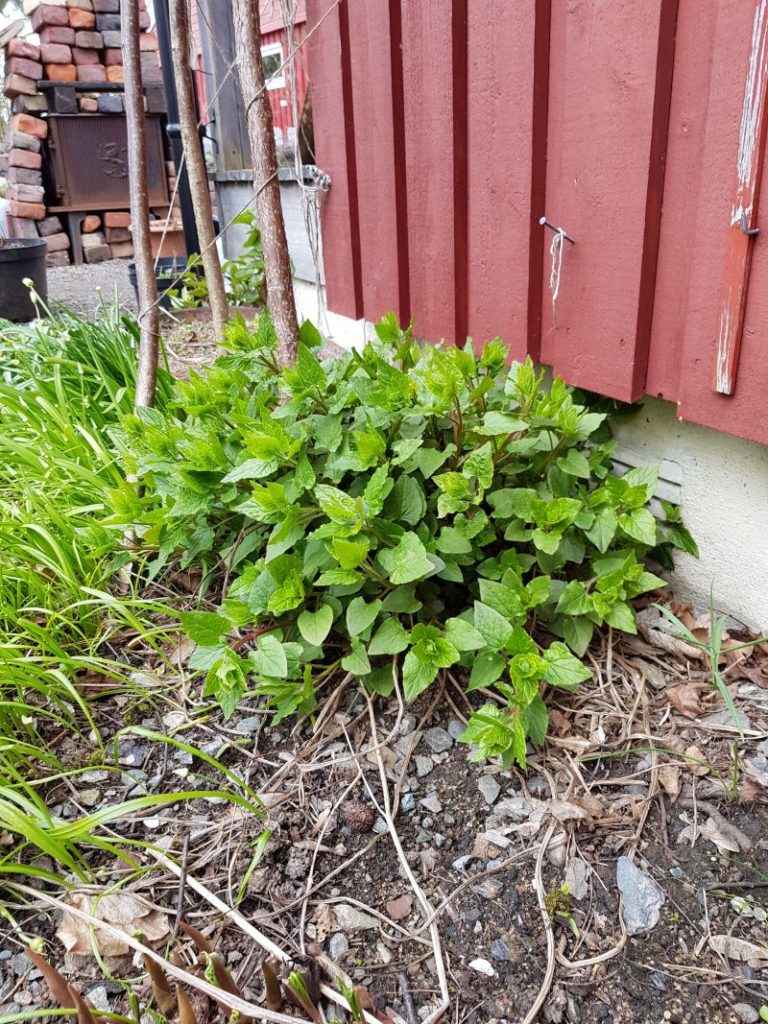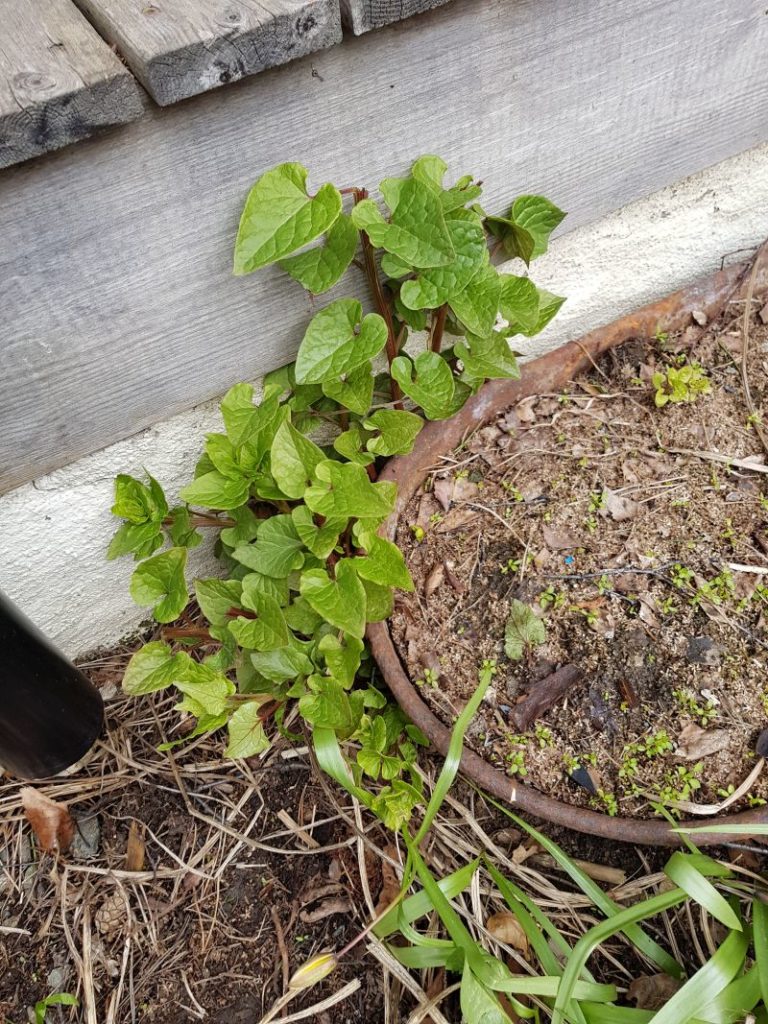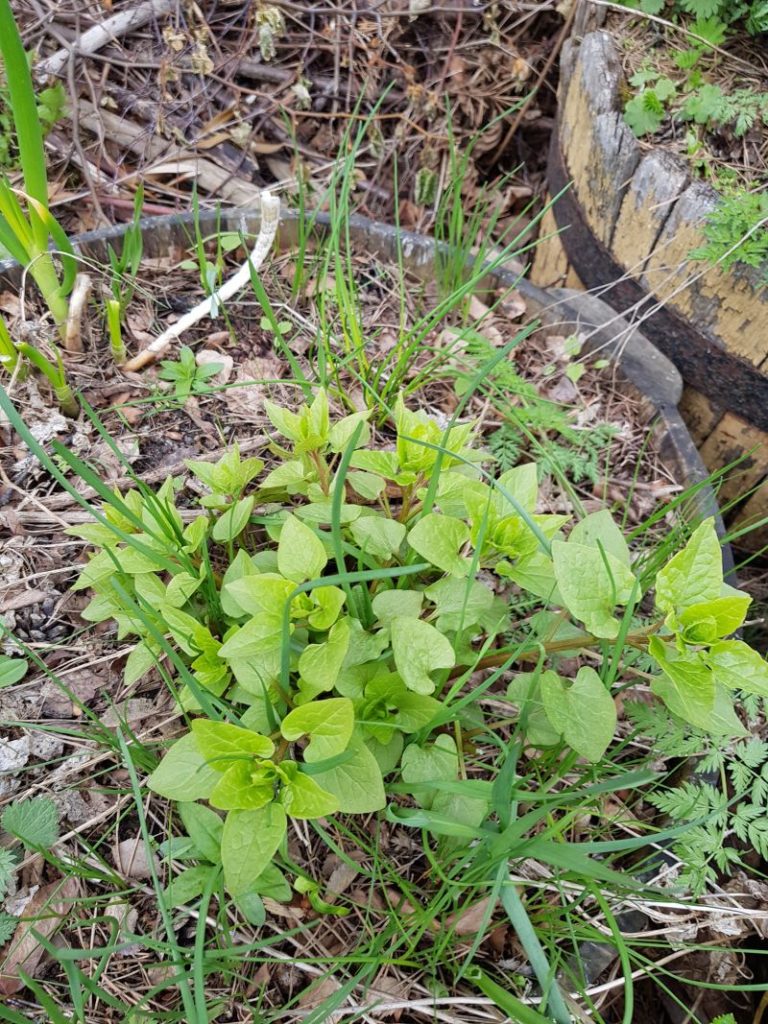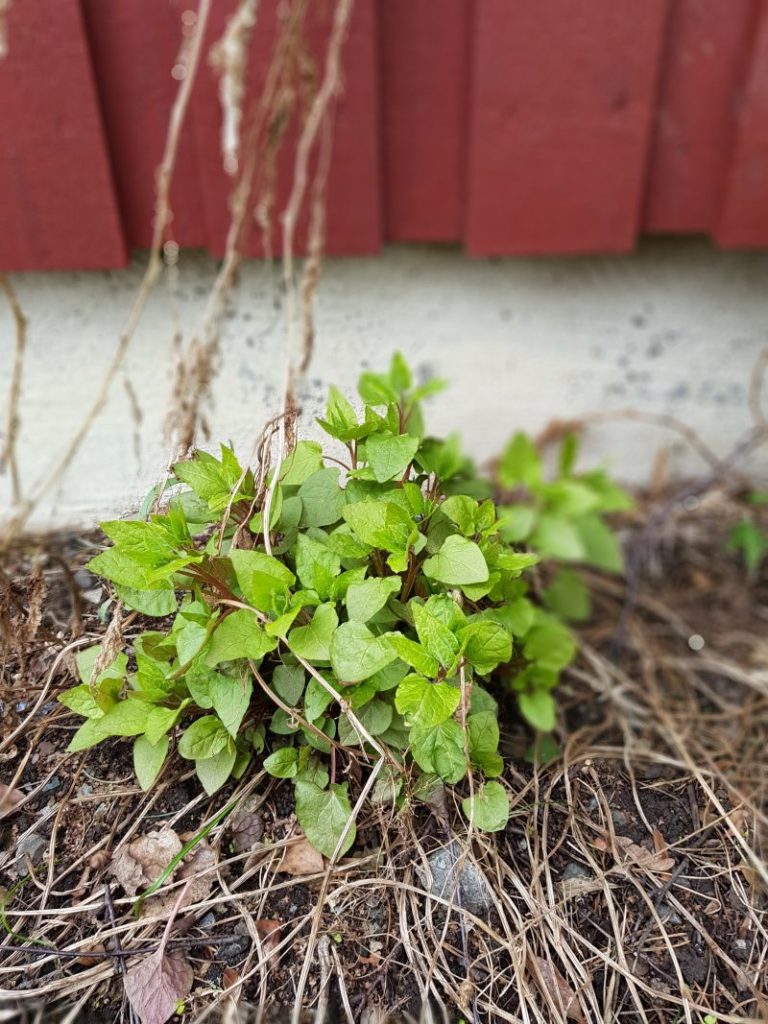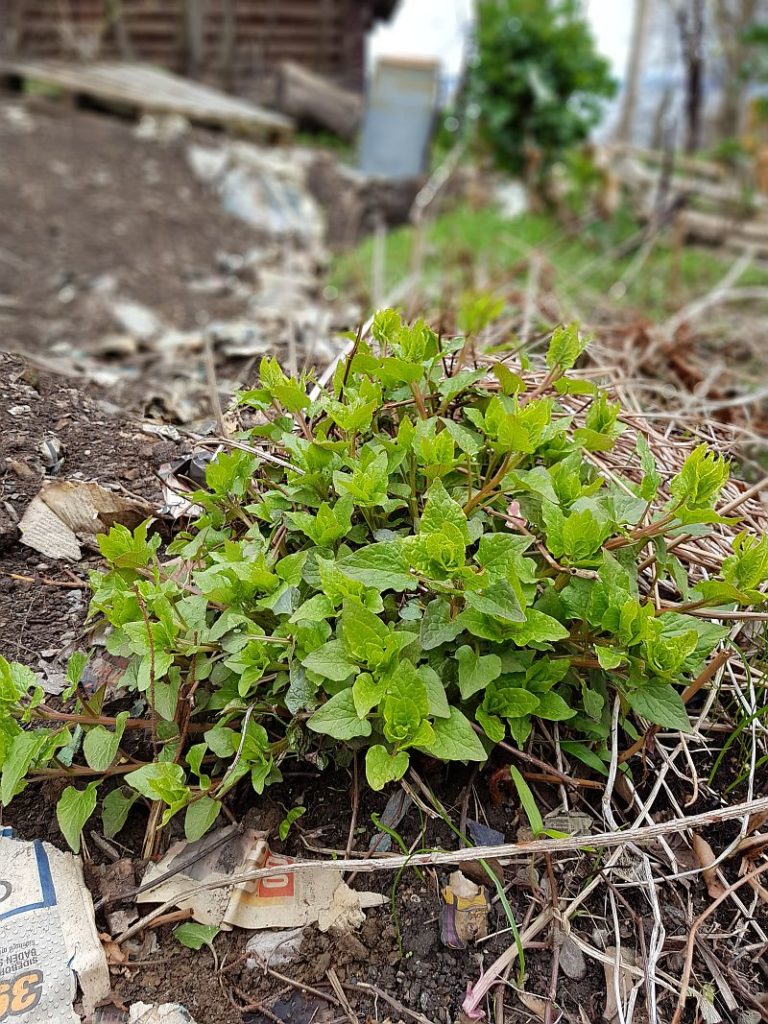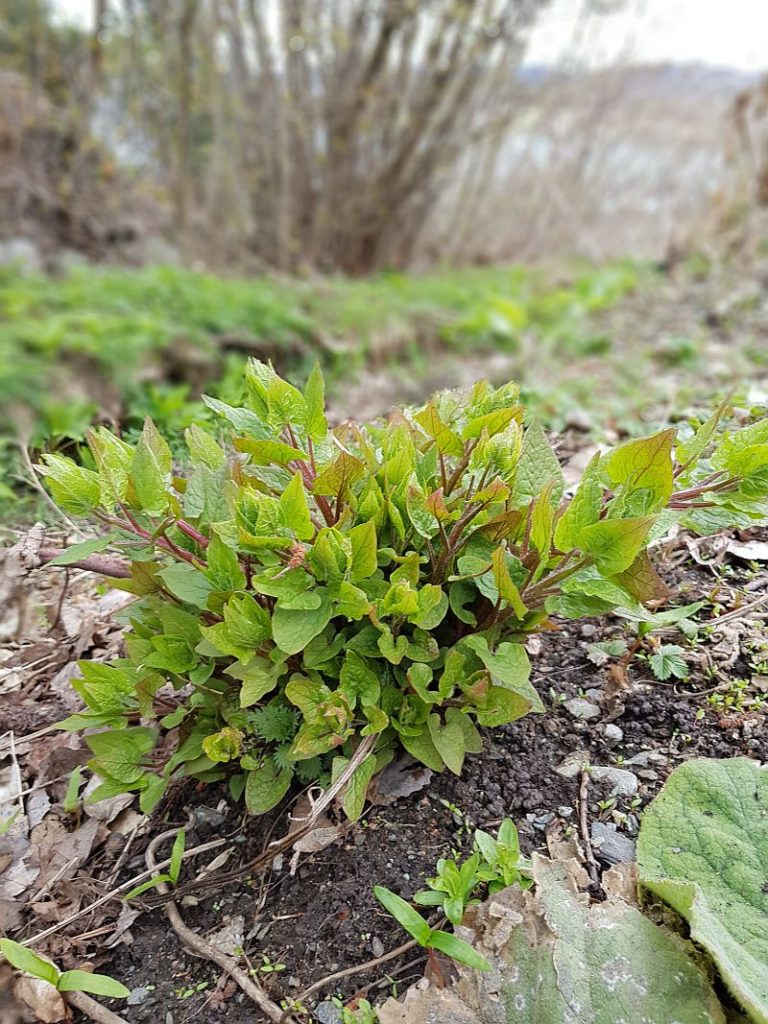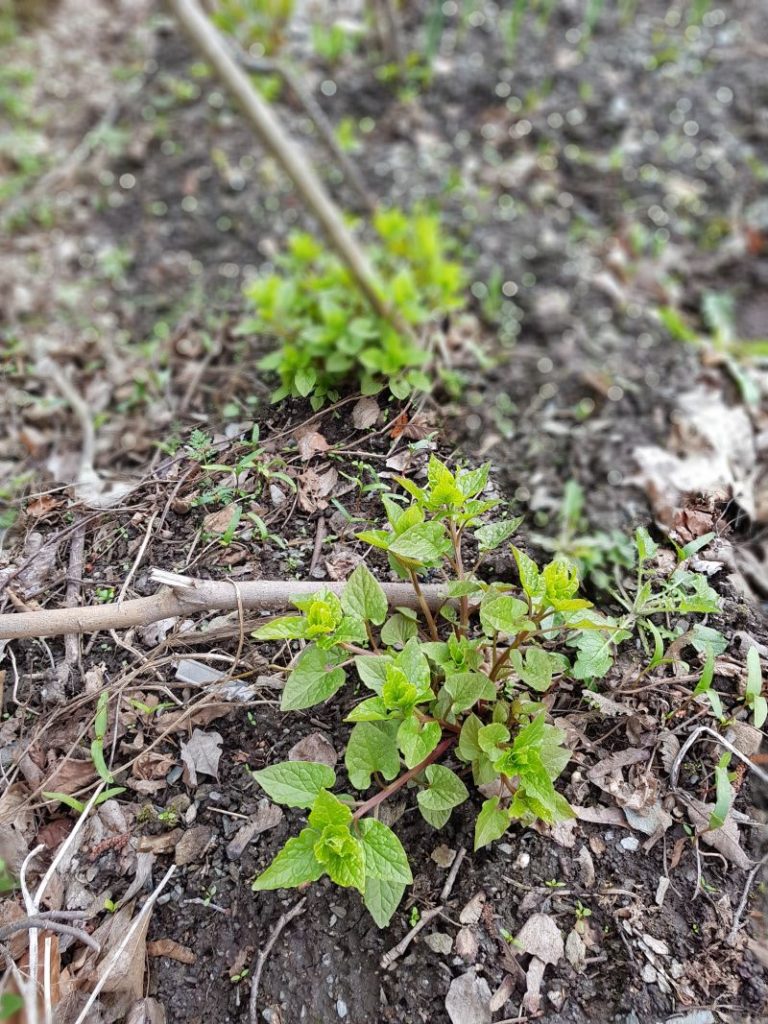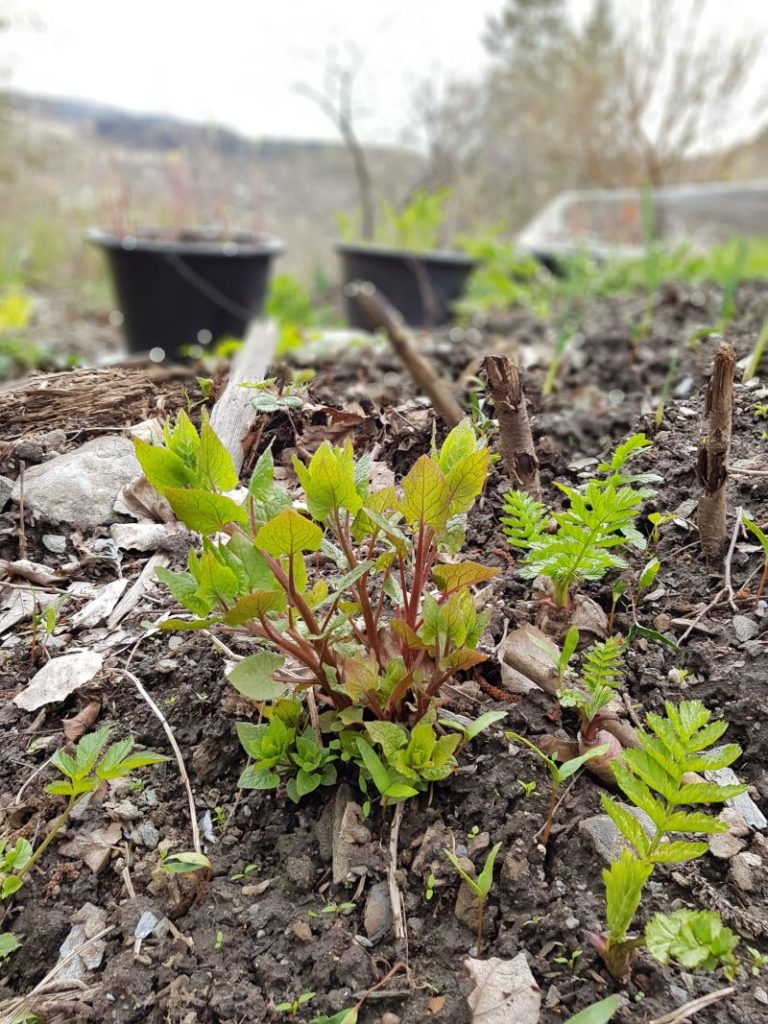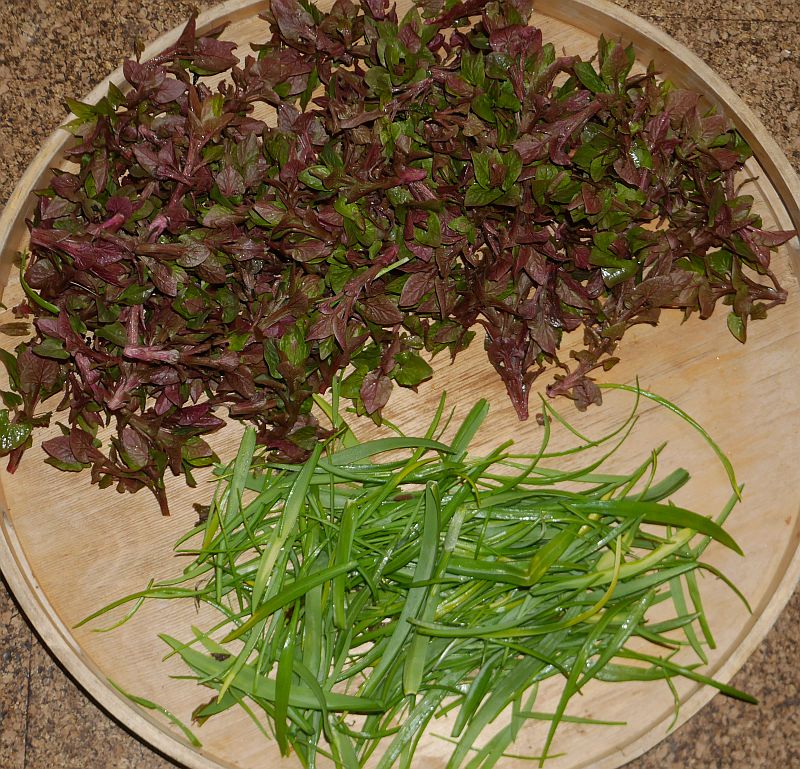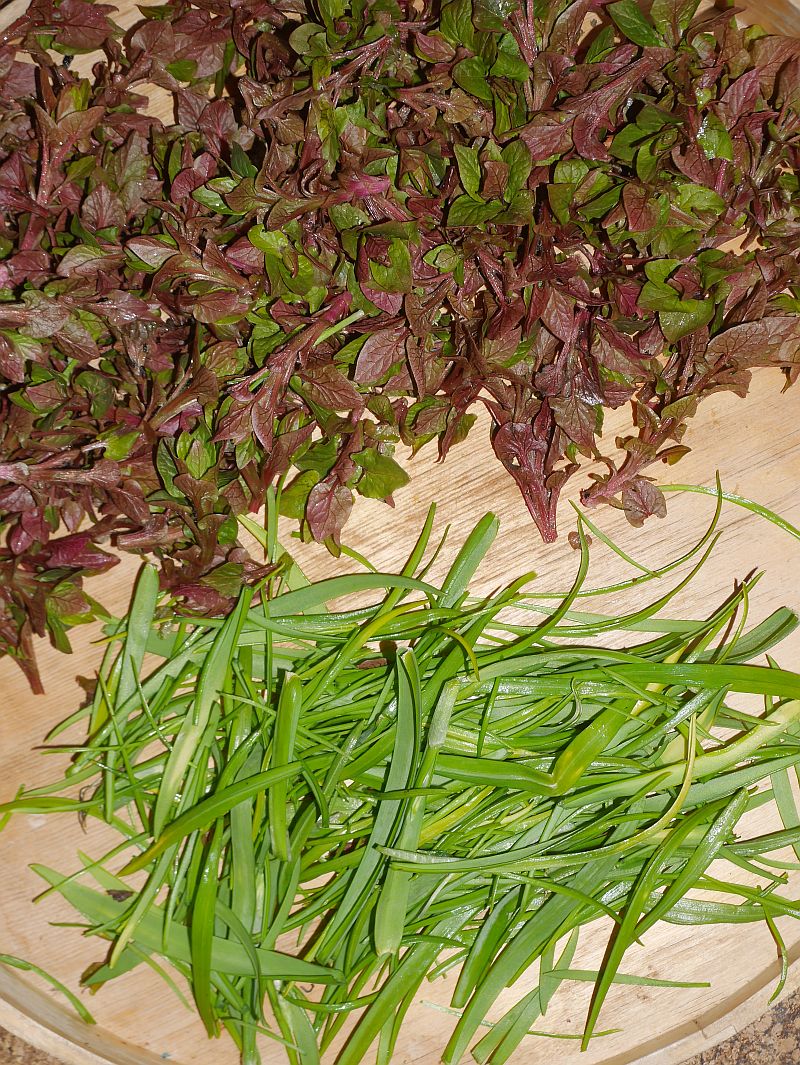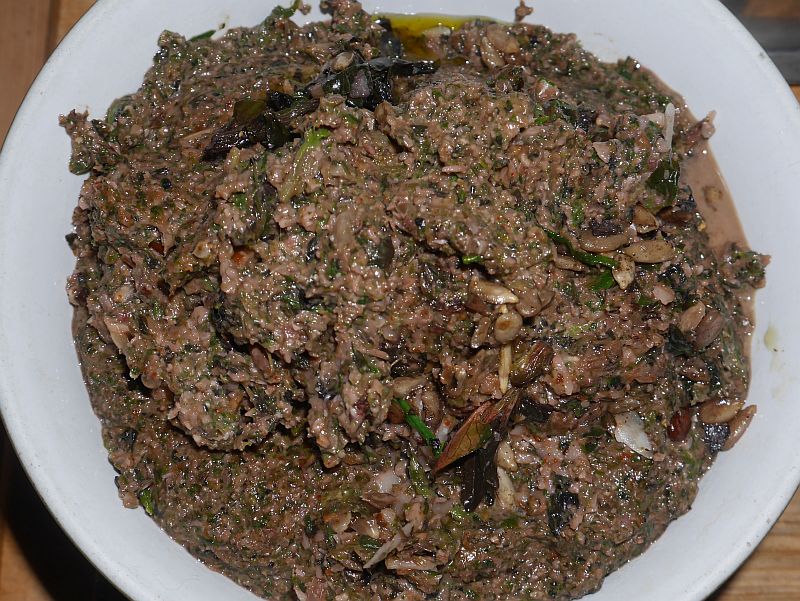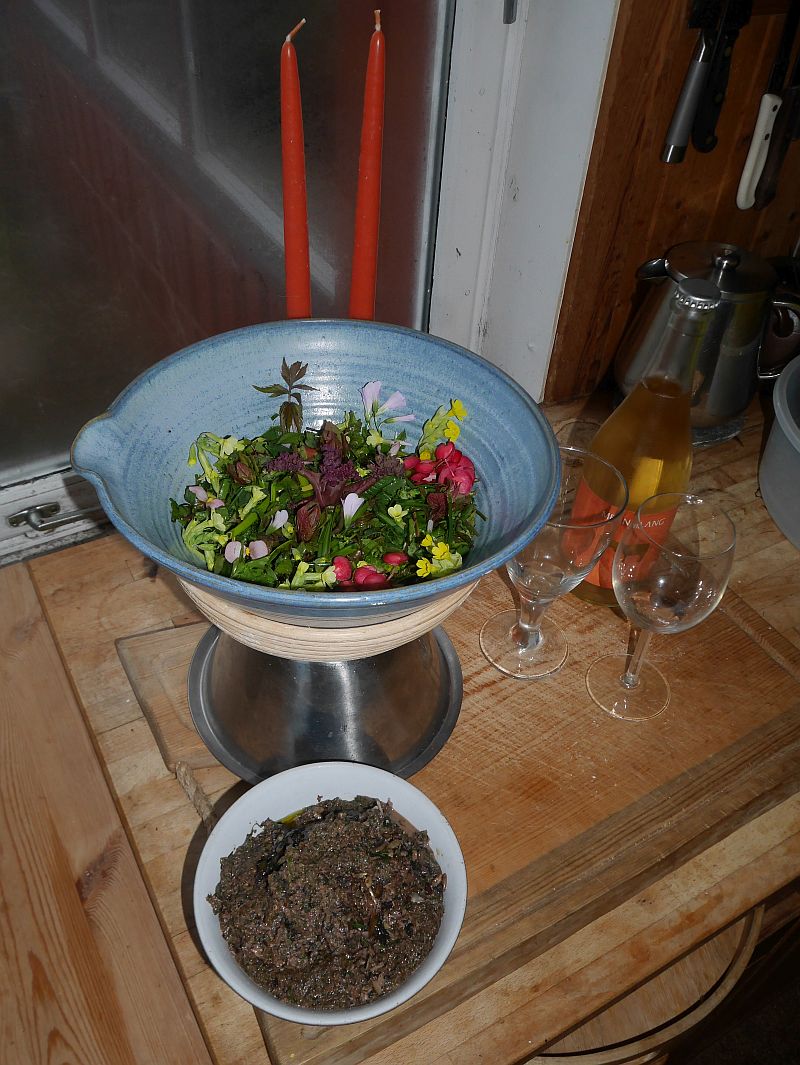As I wrote earlier, it looks like we may have a glut of runner beans (Phaseolus coccineus) this year, the first time for many years. Runner beans are borderline here and last year we only managed to get a few beans before the first frosts. This year, we could have made a first harvest a week ago, but I wanted to keep the first beans for seed for the next couple of years. Yesterday we had bread dough ready and therefore made a pizza with runner beans and a mix of fungi picked in the woods (separate post). The dough was 100% coarse whole grain rye, spelt and emmer (sourdough)! Delicious as always!
Category Archives: Climbers
Hopniss at 63.4N
Hopniss (Apios americana), one of several plants known also as ground nut, is a clambering perennial legume and native american food plant of Eastern North America from Southern Canada to the Gulf of Mexico. For a good account of this as a food plant, look no further than Samuel Thayer’s book “The Forager’s Harvest”. Like many others I’ve tried and failed to grow this and no longer do so. However, it was fun trying and I did at least get something to eat.
I first planted this 20 years ago in my old unheated greenhouse in October 1999. Hillery Hanby who was a member of the Yahoo group Edible Wild kindly sent me a tuber. It grew weakly and didn’t produce anything. Then in early 2009, Hristo from Bulgaria, one of the active members of the Homegrown Goodness forum persuaded me to try again with his supposedly improved variety and I planted it in the greenhouse in spring 2009. This grew better and flowers were opening on 9th October 2011:


On 13th November 2011 I discovered I had a small yield (this is 3 year’s growth!). The tubers grow on a long string rhizome and Sam Thayer reports from 2 to up to 20 tubers on each. He also reports that tubers (in the wild) can vary from size of a grape to a grapefruit and shape also varied considerably.
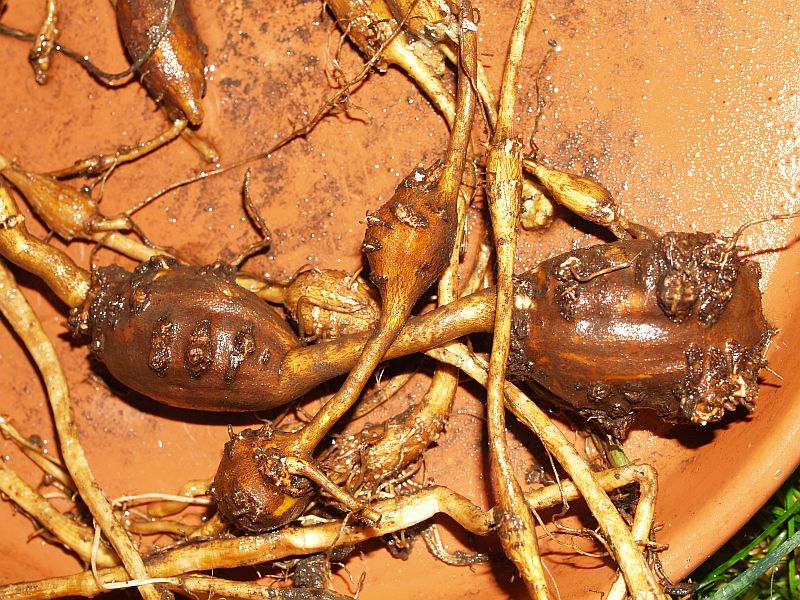

I also had a plant grown in two large pots which I also harvested and both had about 15 small tuberlets on the rhizome that was found winding aroud the base of the pots:

Then, a month later, disaster struck and the greenhouse look like this after a major storm, Dagmar, devastated this area:
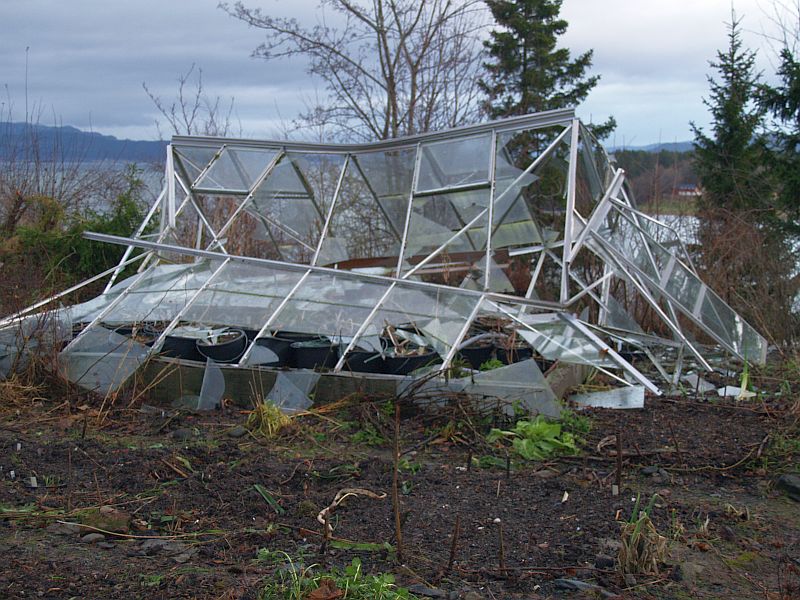

I had replanted some tubers which grew poorly under the new colder conditions without the greenhouse. I was therefore suprised to find my largest tuber “ever” two years later on 26th October 2013:

I suspect that I had missed this one in 2011 and this was one was therefore the result of 5 seasons of growth. Then, in 2014, I took part in trials of new improved varieties. Søren Holt in Denmark coordinated this trial of 4 varieties received from Gautam in New York. Both Søren, Åke Truedsson and myself participated. Gautam wrote: “I have just received our latest batch of improved Apios americana, and am taking the liberty of sending you a very few tubers of our best “bunching” and “trailing” cultivars. Will send you the smallest sizes, for convenience in shipping, but not to worry. They come from excellent stock, with excellent size potential”. Here they are on arrival:

They were planted in a sheltered spot in the garden. These improved varieties were far from improved enough for my climate and. despite having shoots ready on planting, two of the varieties didn’t even bother to grow and the second two grew so badly that I gave up the trial after a couple of years!
So that’s my experience of hopniss in Malvik. I guess I need to try at least one more time before saying it’s not worth it in my climate.
There is one other species, Apios priceana. This one produces one large tuber, but judging by its wild distribution it is unlikely to be more cold tolerant. I’ve only seen it once, at Joe Hollis’ Mountain Gardens in North Carolina last autumn.
Mother and daughter habby
The daughter Hablitzia tamnoides (Caucasian spinach / stjernemelde) was self-sown in the middle of what was where we parked the car and now where I store plants until they’re ready to plant out. It is now almost as big as its mother which is at the back, now about 18 years old!
Hablitzia: from seed to flowering in 4 months
I’ve often noted that Hablitzia plants grow slowly the first year or so, but under ideal conditions (more warmth than we get outdoors here) they can grow fast…
I sowed seed in February, stratifying first for 10 days in the fridge and they germinated quickly in the living room. I grew them on indoors (it was too cold to put them out) and for lack of space I planted together with newly planted taro (Colocasia esculenta) tubers in a large pot. They grew quickly and they were about to start flowering yesterday when I dug up the plants and moved outside!

Hablitzia as a weed!
Hablitzia as a weed!
While researching Hablitzia tamnoides for my book Around the World in 80 plants (2014) I found the following simple entry in a 19th century encyclopedia of ornamental plants: ![]() The author was clearly not impressed…..
The author was clearly not impressed…..
Further Frederik Christian Schübeler (1815-1892) who was professor of botany and manager of the Oslo botanical garden at Toyen in Oslo from 1866-92 also noted from northern Norway that
“At Maalselvdalens Vicarage (69 deg. 10 min. N), where it also grows very well, it reaches 8 feet (2.5m) and doesn’t only give mature seeds, but spreads even in the garden as a weed.”
I found this difficult to believe and thought initially that it had been confused with good king Henry (Chenopodium bonus-henricus) which can be very weedy in a garden. I only had one plant at the time and I struggled to get more than a couple of seeds from it. Introducing a second plant, suddenly there was a lot of seed and seedlings appeared around the mother plants.
Nowadays it appears in many parts of the cultivated parts of my garden spread by the low friction seeds blowing around on ice in the winter and through my compost. Small plants often turn up as a weed in pot plants indoors which have been fed with compost. This is a plant which germinated in a pot with a bay tree (Laurus nobilis) some years ago. When the bay died, I let the Hablitzia grow on and it now uses the bay as a climbing frame!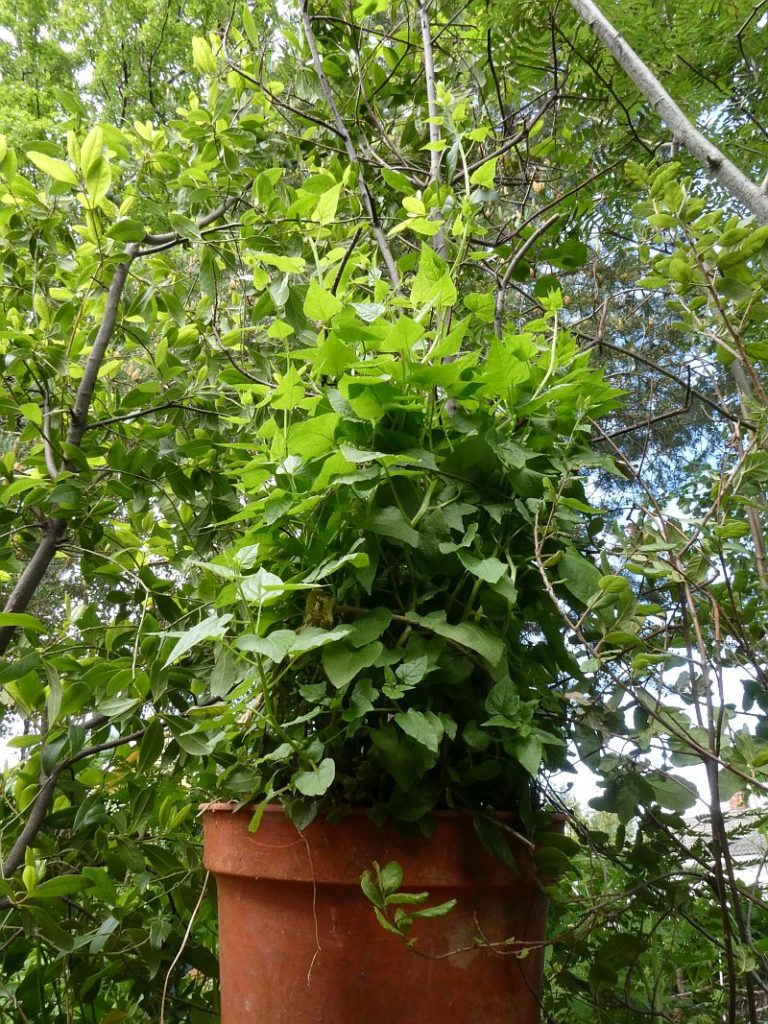
Nevertheless, Hablitzia seems to depend on naked earth to establish itself here and there are no reports of it escaping into nature approaching 150 years after its introduction as a garden plant here.
Yesterday, I was weeding Hablitzia from newly emerged carrot seedlings!
Floppy Habby
It’s that time of year that Hablitzia tamnoides (Caucasian spinach / stjernemelde) goes all floppy and needs help to go upwards rather than sideways! The floppiness you see here has nothing to do with the weather which habby loves although it’s never expereienced being snowed on for 5 days in a row in the middle of May in its short 18 year lifetime!
Hablitzia picture gallery
As I’ve mentioned elsewhere I eat more Hablitzia tamnoides (Caucasian spinach / stjernemelde) than any other spring vegetable and have eaten it every day now since the beginning of March (70 days). A friend mentioned on Instagram that she would love to see my plant! Well, I’ve just counted them and I have 36 harvestable plants and many different accessions now and more on the way…spread around the garden. About time then for an overview. They grow back so quickly even though we’ve hardly had a single day above 10C this spring that you wouldn’t have guessed that I’ve cut most of them right back!
They regularly self-seed but they only see to succeed in naked soil where there is little competition. All the plants I tried in the forest garden area didn’t make it (in competition with ground elder, Aegopodium).
The paradoxical habby pesto
Last night’s Hablitzia tamnoides (Caucasian spinach / stjernemelde) and Allium paradoxum pesto was of course delicious with golpar (Heracleum spice), garlic, chili, sunflower seeds, parmesan, salt and pepper.
Habby in the snow
I think that we ate Hablitzia (fondly known as habby) shoots every day this March as the mild winter and largely unfrozen soil brought them on about a month earlier than normal, even the plants in the shadiest parts of the garden, where frozen soil normally lingers longer, have been harvested regularly this year. They’ve been used in all sorts of dishes from pizza to quiche to salads to a soba dish, stir fry in green pasta sauce, in curry, in vegetable patties and baccalao. Tasty, adaptable and nutritious! We’ve had 3 or 4 heavy snow falls which have melted again in a few days but the Caucasian spinach (stjernemelde or star orach in Norwegian) is hardly affected.
HABBY EASTER TO ALL MY FOLLOWERS :)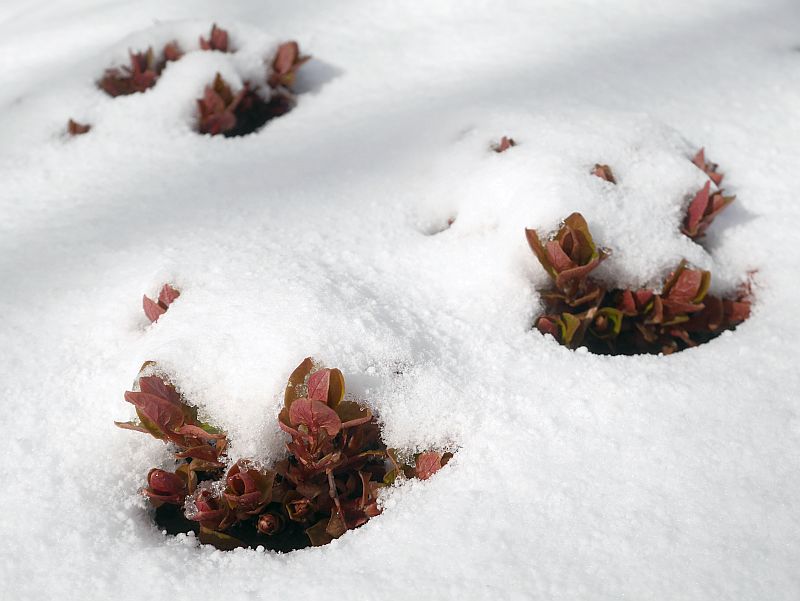
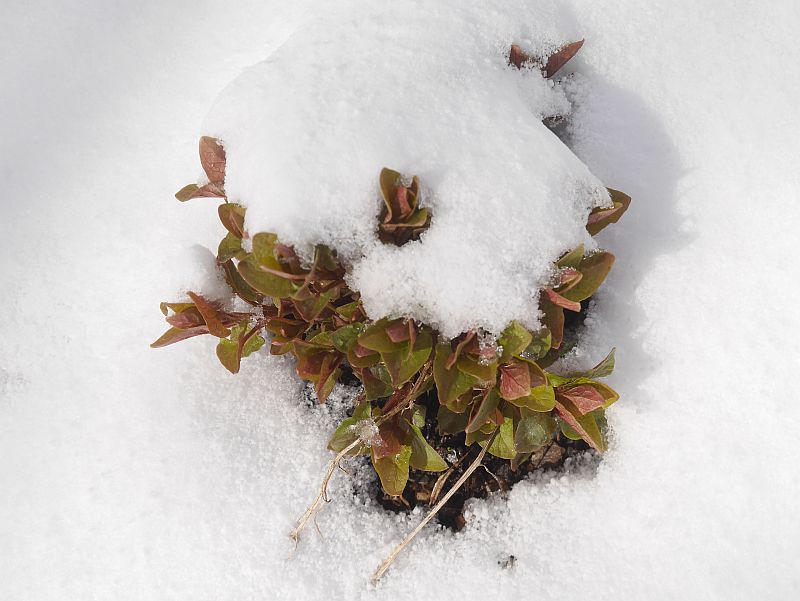
Floriferous Hablitzia
